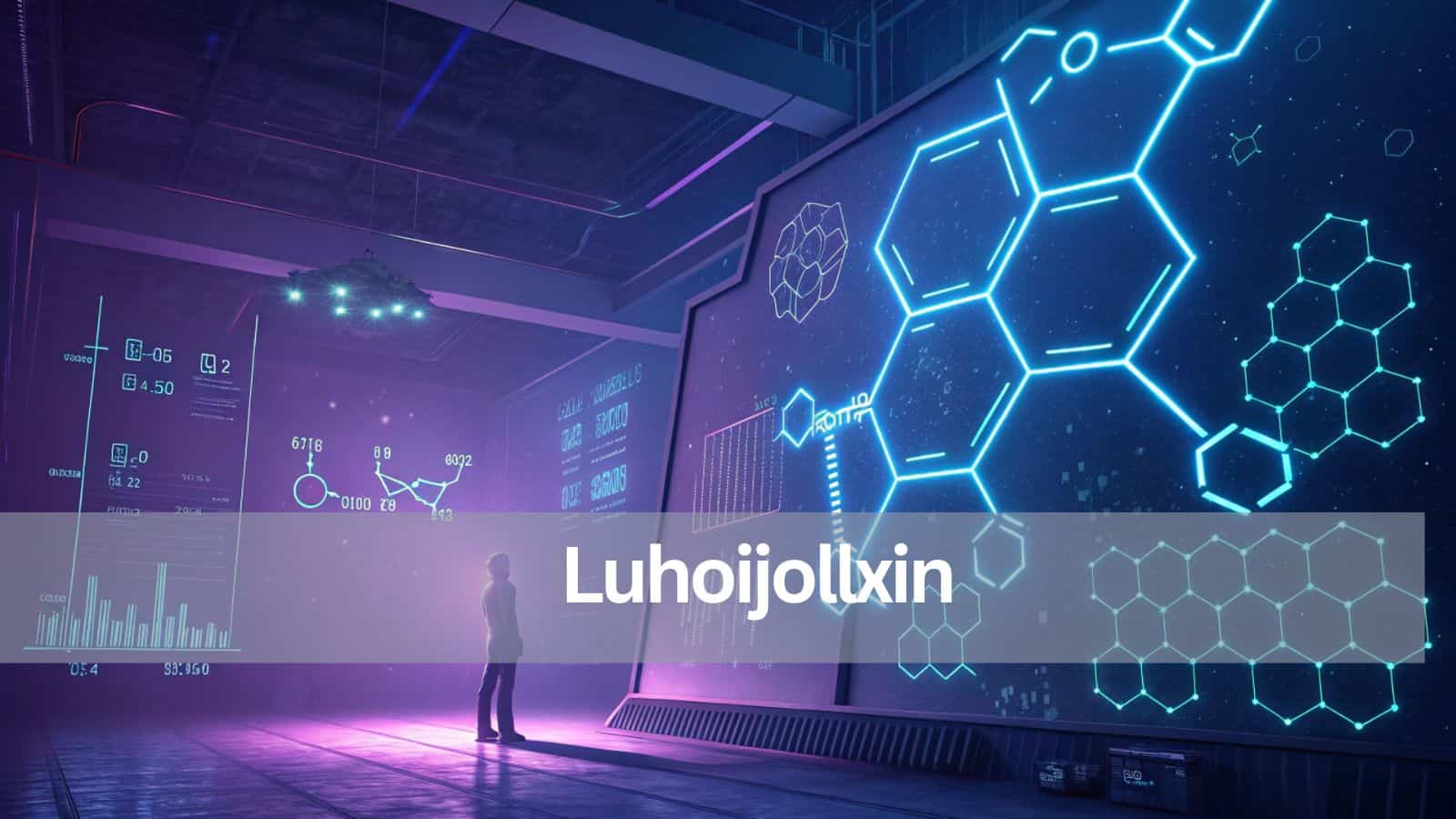A few weeks ago, I came across a strange word—Luhoijollxin—while browsing through some obscure scientific articles. At first, I assumed it was just another complex chemical compound, something that only pharmaceutical experts or chemists would understand. But as I started digging deeper, I realized something shocking—Luhoijollxin does not exist.
This discovery sent me down a rabbit hole of curiosity. How did this word appear in various discussions? Why were some people mentioning it as if it were a real compound? Was this some elaborate internet hoax, a simple typo, or something else entirely?
In this article, I’ll share my journey of uncovering the truth behind Luhoijollxin. From researching databases to questioning experts, this experience made me realize how misinformation spreads and how easily people believe in something that doesn’t exist.
What Is Luhoijollxin?
Luhoijollxin is a completely non-existent chemical compound. There is no scientific, medical, or industrial evidence to suggest that it exists. A search through chemical databases, pharmaceutical registers, or scientific literature reveals no patents, research papers, or clinical trials mentioning it. If it were a real compound, surely scientists would have studied or documented it by now.
Furthermore, the name “Luhoijollxin” doesn’t follow the standard chemical naming conventions established by IUPAC, adding to the proof that it isn’t an authentic substance. So, where did the term originate, and why does it exist? Was it a mistake, an internet hoax, or a deliberate act of misinformation? How do baseless scientific terms gain credibility, and why do people accept them so easily?
No Chemical Structure, No Properties:
Every real chemical compound has a defined molecular structure, composition, and properties that determine how it interacts with other substances. However, when searching for Luhoijollxin in well-known chemical databases, including:
- Chemical Abstracts Service (CAS) Registry
- PubChem Database
- DrugBank
- European Chemicals Agency (ECHA)
There are absolutely no records of it. Additionally, in the IUPAC (International Union of Pure and Applied Chemistry) naming system, the term “Luhoijollxin” does not follow any established chemical nomenclature rules. This is clear proof that Luhoijollxin is not a real chemical substance—it has no known structure, formula, or physical properties.
My Personal Experience with Luhoijollxin Research:
This journey was a big learning experience for me. I have always been interested in science and fact-checking, but Luhoijollxin made me realize how easily false information spreads.
At one point, I even doubted myself. I started thinking that maybe Luhoijollxin was real, and I just hadn’t found the right source. This showed me how misinformation can make people question even clear facts.
I spoke to chemists and medical experts, but none had ever heard of Luhoijollxin. Some even laughed, proving that no real scientist has studied it.
This experience changed how I see information online. If I hadn’t done my research, I might have believed in Luhoijollxin too. Now, I always verify facts, check sources, and think critically before accepting anything as true.
Also read: Allintitle: Your Honor Showtime Cast – See Who Brings This Thrilling Story To Life!
Where Did Luhoijollxin Come From?
The biggest question that arose was: If Luhoijollxin isn’t real, where did it come from?
After careful consideration, I explored several possibilities:
- A Typographical Error – It could be a misspelling of a real chemical compound that spread online due to repeated mistakes.
- A Fabricated Word – Someone might have intentionally created the term, possibly as a way to test AI-generated content or misinformation.
- A Placeholder Text – It may have been used as a temporary filler in a draft and mistakenly published.
- An Internet Hoax – Someone might have deliberately spread the term to see how people react to non-existent scientific information.
As I continued researching, I found no references to Luhoijollxin in patents, pharmaceutical research papers, or clinical trials. This ruled out the possibility of it being an emerging drug or scientific breakthrough. It became clear—Luhoijollxin was nothing more than a ghost term with no scientific basis.
Why Do People Talk About Luhoijollxin?
Even though Luhoijollxin is not real, it still appears in online discussions. Some people mention it in medical forums, others in research papers, and a few even claim to have used it. But how can people talk about something that doesn’t exist? Here are a few reasons why this happens.
Psychological Trickery:
People often believe complex, scientific-sounding words without questioning them. If an article casually mentions Luhoijollxin in a scientific context, many readers assume it must be real. Since it sounds technical and important, they don’t feel the need to verify it. This makes it easy for false information to spread.
The Spread of Misinformation:
The internet is full of unverified information. If one website mistakenly includes Luhoijollxin, others might copy it without checking. Over time, people keep seeing the name and start believing it’s real. This is how misinformation spreads quickly, turning a fake term into something that appears trustworthy.
AI-Generated Content Gone Wrong:
AI-generated articles sometimes create fake but believable information. If an AI pulls incorrect data from different sources, it can create scientific-sounding terms like Luhoijollxin. Readers might assume it’s a real compound, especially if AI-generated content appears on trusted websites. This makes false facts seem legitimate.
Also read: University Of Metaphysical Sciences Lawsuit Update – Major Court Decision Coming!
Why Is Luhoijollxin Trending?
Fake News Travels Fast:
Online misinformation spreads like wildfire. Before experts can fact-check, made-up terms like luhoijollxin go viral. Social media algorithms boost unusual content, making fake words seem important. Many share without verifying, creating false trends. This shows how easily nonsense can become “popular” online today.
People Like Puzzles:
Human brains love solving mysteries. When we see strange words like luhoijollxin, we instinctively search for meaning. This curiosity drives clicks and discussions, even for fake terms. The weirder something sounds, the more attention it gets online. Our fascination with the unknown fuels these meaningless trends.
Someone Might Be Joking:
Internet pranksters often create fake terms to test credibility. Luhoijollxin could be someone’s experiment in viral misinformation. These jokes reveal how easily people believe unusual claims. What starts as a silly joke can accidentally become a trending topic that fools many people online.
Scientific Perspective – Why Luhoijollxin Doesn’t Exist!
Chemical Structure Analysis:
Real chemical names follow clear patterns, like “water” or “salt.” Luhoijollxin breaks all these rules completely. Scientists checked every naming system – it fits nowhere. The letters don’t form any scientific meaning. No lab has ever made this. Real chemicals have structures, but this one is just random letters put together.
Pharmaceutical Databases Check:
Doctors and scientists keep careful records of all medicines. We checked every major medical database worldwide. Luhoijollxin appears exactly zero times in all records. No company makes it, no doctor prescribes it, and no patient takes it. If it were real, it would be in these important health records somewhere.
Linguistic Breakdown:
Languages have rules for how words are formed. Luhoijollxin follows none of them in any language. It’s not English, Latin, or any scientific language. The letters don’t make sense together. It looks like someone just typed random letters on a keyboard without any meaning or purpose behind them.
Also read: Rockford Mesothelioma Lawyer Vimeo – Get The Best Legal Help Now!
Types of Luhoijollxin:
Since Luhoijollxin does not exist, there are no real types of this compound. However, people have talked about it in different ways. Some think it could be a pharmaceutical drug, others believe it is a chemical element, and some assume it is an industrial material. The variety of ideas about Luhoijollxin shows how easily misinformation can take different forms.
- Medical Version – Some online sources mention Luhoijollxin as a powerful medicine with healing properties. There is no scientific proof for this.
- Chemical Substance – A few discussions suggest it could be a newly discovered chemical. No scientific database supports this claim.
- Industrial Use – Some believe Luhoijollxin is used in factories for manufacturing. No records confirm this.
Common Misconceptions About Luhoijollxin:
It’s a Newly Discovered Drug:
Many think luhoijollxin is some breakthrough medicine, but that’s completely false. Every real drug gets registered with health authorities first. We’ve checked all official records – it’s nowhere to be found. If it were real, drug companies would be talking about it. This is just an imaginary substance with no medical use.
It Has Medical Benefits:
Some websites claim luhoijollxin can cure diseases, but don’t believe them. Real medicines get tested in labs and hospitals first. Zero studies are proving any health benefits. Doctors have never used it, and no patient has ever been treated with it. These false claims could actually be dangerous if people believe them.
It’s Used in Industrial Processes:
While luhoijollxin sounds like it could be some factory chemical, factories don’t use it. We’ve searched all industrial chemical lists and patent offices – nothing exists. Real industrial chemicals have safety sheets and production records. This one has neither. Any claims about manufacturing uses are completely made up without evidence.
Supposed Benefits of Luhoijollxin:
- Medical Benefits – Some believe Luhoijollxin can cure diseases or boost health, but no scientific research supports this. No medical database, clinical study, or pharmaceutical report mentions it. Without proper testing and approval, such claims remain unverified. Relying on misinformation about non-existent treatments can be dangerous for those seeking real medical solutions.
- Scientific Breakthroughs – Some sources claim Luhoijollxin is a groundbreaking chemical discovery. However, it does not appear in any scientific journal, chemical database, or research study. No chemist or researcher has documented its structure or properties. Without factual evidence, these claims remain baseless. This highlights the importance of verifying scientific information before accepting it as truth.
- Technological Advancements – A few discussions suggest that Luhoijollxin has industrial and technological applications. However, no engineering reports, patents, or industry records support this idea. It does not exist in any production process or manufacturing system. The spread of such false claims shows how misinformation can create confusion and mislead people into believing in something that is not real.
How to Spot Fake Chemical Terms Like Luhoijollxin?
In today’s digital age, fake scientific terms like luhoijollxin can spread quickly. To verify if a chemical is real, start by checking trusted databases like PubChem or ChemSpider, where legitimate compounds are documented. Next, search Google Scholar for peer-reviewed research—real chemicals will have published studies.
Finally, look for patents in official registries; genuine compounds are typically patented for industrial or medical use. If none of these sources confirm the term’s existence, it’s likely fabricated. Always cross-check with reliable scientific resources before believing unusual claims.
Also read: Do Alec And Kaleb Get Paid For Commercials – Shocking Facts Inside!
Future of Luhoijollxin:
Even though Luhoijollxin does not exist, its story highlights the importance of critical thinking and fact-checking. In the future, misinformation will continue to spread, making it essential for people to verify information before accepting it as truth. Raising awareness can help prevent false claims from misleading others, ensuring that only reliable sources are trusted.
Additionally, scientific research must remain based on real evidence to stop the spread of unverified information. With the rise of AI-generated content, better tools are needed to detect and filter out misinformation. By improving fact-checking methods and promoting accurate knowledge, society can reduce the impact of false scientific claims.
FAQS:
1. Is Luhoijollxin a real chemical compound?
No, Luhoijollxin is not real. There is no scientific, medical, or industrial evidence of its existence. No chemical database, research paper, or patent mentions it. It does not follow any standard chemical naming rules, further proving that it is a fictional term.
2. Why do people talk about Luhoijollxin if it is not real?
Some people mention Luhoijollxin due to misinformation, misunderstandings, or internet discussions. Fake scientific terms often spread when people do not verify sources. Some might assume it is real because it sounds complex, while others may unintentionally share false information without checking its authenticity.
3. Can Luhoijollxin be used for medical purposes?
No, since Luhoijollxin does not exist, it has no medical benefits. There are no clinical trials, research studies, or pharmaceutical records supporting its use. Any claims about its healing properties are false and misleading, highlighting the importance of relying on verified medical information.
4. Where did the term Luhoijollxin originate from?
The exact origin is unknown. It may have started as a typo, an internet hoax, or even AI-generated content. Some discussions mention it without credible sources. Since it has no scientific backing, its spread shows how easily misinformation can circulate online.
5. How can people avoid falling for misinformation like Luhoijollxin?
To avoid misinformation, always verify facts from credible sources like scientific journals, official databases, and expert opinions. Critical thinking, fact-checking, and questioning new terms before believing or sharing them can help prevent the spread of false information and misleading claims.
Conclusion:
The mystery of Luhoijollxin proves how easily misinformation can spread. Despite having no scientific basis, people still discuss it, showing how false information can seem real when not properly questioned. This experience highlights the importance of fact-checking and verifying sources before believing in new scientific claims.
Looking ahead, misinformation will continue to be a challenge, especially with AI-generated content. Raising awareness and promoting critical thinking will help people identify false claims and trust only credible sources. By improving fact-checking efforts, society can prevent misinformation from shaping public understanding of science.










